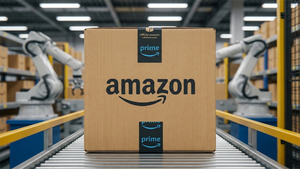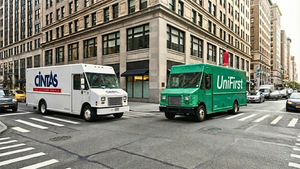
The United States is grappling with a significant economic headwind as escalating tariff rates are increasingly blamed for fueling inflationary pressures and driving up the cost of living for American consumers and businesses. With the average effective U.S. tariff rate now estimated at a staggering 18.6% – a level not seen since the Great Depression – the hidden tax on imports is manifesting as higher prices across a wide array of goods, creating a challenging economic environment characterized by persistent inflation and growing concerns of stagflation. This surge in import duties is forcing companies to recalibrate their supply chains and pricing strategies, ultimately passing the increased burden onto households already struggling with elevated expenses.
The immediate implications are clear: a direct transfer of costs from importers to consumers, alongside broader economic distortions. From everyday groceries to essential apparel and automotive parts, the price tags reflect the tariff bite. This economic phenomenon is not merely an abstract figure on a balance sheet; it is a palpable squeeze on household budgets, reducing purchasing power and complicating the Federal Reserve's efforts to steer the economy toward stability without stifling growth. The cumulative effect is a pervasive inflationary trend that touches nearly every aspect of daily commerce, making everything from a new pair of shoes to a cup of coffee noticeably more expensive.
The Tariff Mechanism: A Deeper Dive into Rising Costs
The current wave of inflationary pressure stemming from tariffs is a complex interplay of direct and indirect economic mechanisms. At its core, a tariff is a tax levied on imported goods, which, while paid by the importing company, is almost universally passed on to the end consumer. This direct cost pass-through is the most straightforward mechanism: a higher tariff on an imported product immediately translates into a higher retail price for that product. For instance, the recent tariffs have led to an estimated 39% increase in shoe prices and 37% higher apparel prices in the short run.
Beyond direct imports, tariffs on intermediate goods and raw materials are significantly impacting domestic manufacturing. When tariffs are imposed on critical inputs like steel, aluminum, or specialized components, the production costs for U.S. manufacturers climb. These increased costs are then embedded in the final price of domestically produced goods, creating a ripple effect where even non-imported items become more expensive. This is evident in sectors like automotive parts and appliances, where reliance on imported metals can drive up the cost of the finished product.
The economic landscape is further complicated by reduced competition. As tariffs make imported goods pricier, domestic producers may face less pressure from foreign competitors, potentially allowing them to raise their own prices. This reduction in competitive intensity can limit consumer choice and further contribute to an upward price spiral. Additionally, tariffs often force companies to re-evaluate and, in some cases, re-shore their supply chains, an expensive and time-consuming process that incurs higher operational costs, which are inevitably factored into consumer prices. Recent data underscores this trend: the Consumer Price Index (CPI) rose 2.9% year-over-year in August 2025, with core CPI (excluding food and energy) holding at 3.1%, both figures reflecting the persistent upward pressure tariffs exert on the economy. Expert analysis from institutions like J.P. Morgan and the International Monetary Fund (IMF) confirms that these tariffs are a notable contributor to inflationary pressures, estimating that they could boost Personal Consumption Expenditures (PCE) prices by 1-1.5% this year and cost the average U.S. household thousands of dollars annually.
Who Wins and Who Loses in the Tariff Tug-of-War?
The tariff landscape creates a distinct set of winners and losers across industries and for various stakeholders, reshaping competitive dynamics and profitability.
Potential Winners:
Domestic industries and companies that produce goods directly competing with tariffed imports stand to gain. For instance, U.S. steel (NYSE: X) and aluminum producers could see increased demand and pricing power as imported alternatives become more expensive. Similarly, domestic manufacturers of textiles, apparel, and footwear, such as HanesBrands (NYSE: HBI) or Skechers U.S.A. (NYSE: SKX), might experience a competitive advantage, allowing them to capture a larger market share or even raise prices due to reduced foreign competition. Companies with robust domestic supply chains or those that have successfully re-shored production might also find themselves in a stronger position, insulated from the direct impact of import duties. Furthermore, domestic agricultural producers, particularly those whose products face less competition from tariffed imports, could see an uptick in demand.
Potential Losers:
The primary losers are consumers, who bear the brunt of higher prices for a wide range of goods. Retailers heavily reliant on imported goods, especially those sourcing from countries targeted by tariffs, face significant challenges. Companies like Walmart (NYSE: WMT), Target (NYSE: TGT), and various fashion retailers are pressured to absorb costs, pass them on, or find new, potentially more expensive, suppliers. Manufacturers that depend on imported raw materials or components, such as automotive companies like General Motors (NYSE: GM) or Ford (NYSE: F), or electronics manufacturers, see their production costs rise, impacting profit margins or necessitating price increases for their finished products. Small and medium-sized businesses (SMBs) are particularly vulnerable, often lacking the scale or resources to easily absorb increased costs, reconfigure supply chains, or negotiate better terms with suppliers. The transportation and logistics sectors could also face disruptions and increased costs as global supply chains are re-routed and made less efficient.
Broader Industry Impact and Strategic Shifts
The cascading effects of rising tariffs extend far beyond the immediate increase in consumer prices, reshaping entire industry landscapes and influencing global trade dynamics. These duties are not just a temporary blip but a significant structural shift that companies are being forced to adapt to.
One of the most profound impacts is on global supply chains. Companies that have spent decades optimizing their sourcing and production networks for efficiency and cost-effectiveness are now compelled to re-evaluate. This often means diversifying their supplier base away from tariffed nations, a process known as "de-risking" or "friend-shoring," which can lead to higher costs and decreased efficiency in the short term. The technology sector, for example, heavily reliant on complex international supply chains for components, is seeing increased pressure to find alternative manufacturing hubs outside of traditionally low-cost regions. This could lead to a fragmentation of global production, with implications for innovation and economies of scale.
Beyond supply chain reconfigurations, tariffs are accelerating broader industry trends towards regionalization and even re-shoring. Governments, seeking to bolster domestic production and reduce reliance on foreign entities, may offer incentives for companies to bring manufacturing back home. This could be a boon for domestic industrial and manufacturing sectors, but also means higher labor and operational costs for businesses, which will likely be reflected in consumer prices. The regulatory and policy implications are also substantial. Tariffs often invite retaliatory measures from affected countries, leading to trade wars that disrupt market access for export-oriented industries. This creates an unpredictable operating environment, making long-term planning difficult for businesses and increasing overall economic uncertainty, as highlighted by the IMF's warnings about global financial market volatility. Historically, periods of high tariffs, such as during the Great Depression, have been associated with reduced global trade and economic contraction, offering a cautionary tale for current policy decisions.
Navigating the Uncharted Waters: What Comes Next
The current trajectory of rising tariffs and their inflationary fallout points to a complex and challenging future, necessitating strategic pivots and adaptive measures from businesses, consumers, and policymakers alike.
In the short-term, consumers should brace for continued price increases across a broad spectrum of goods, particularly those with high import content or those relying on tariffed raw materials. Businesses, especially retailers and manufacturers, will likely continue to grapple with margin compression, forcing them to make difficult decisions regarding pricing, inventory management, and supplier relationships. We can expect to see an accelerated push towards supply chain diversification and optimization, with companies exploring new sourcing geographies to mitigate tariff risks. This could mean increased investment in automation and domestic production capabilities for critical goods, even if the initial costs are higher.
Long-term possibilities include a significant reshaping of global trade architecture. If tariffs persist or escalate, they could lead to a more fragmented global economy, characterized by regional trade blocs and reduced interdependence. This might foster greater national self-sufficiency in key industries but could also result in higher global prices and less efficient resource allocation. Companies will need to engage in sophisticated scenario planning, anticipating various trade policy outcomes and their impact on profitability. This could involve exploring new market opportunities in less tariff-affected regions or investing in research and development to innovate around rising material costs. For consumers, the long-term outlook might involve a sustained period of higher prices for certain categories, influencing purchasing habits and potentially driving demand for more durable, locally sourced, or second-hand goods. Policymakers will face ongoing pressure to balance protectionist aims with inflationary concerns, potentially leading to adjustments in tariff schedules or targeted subsidies to offset consumer costs.
Conclusion: A New Era of Economic Scrutiny
The current inflationary bite of rising tariffs marks a significant turning point in the global economic landscape, ushering in a new era of heightened scrutiny for both consumers and investors. The key takeaway is clear: tariffs, once viewed by some as a tool for industrial protection, are now demonstrably contributing to elevated consumer prices and creating significant headwinds for businesses across various sectors. The era of cheap, globally sourced goods appears to be receding, replaced by a cost structure that reflects increased import duties and the associated supply chain realignments.
Moving forward, the market will remain acutely sensitive to any shifts in trade policy and their impact on inflation. Investors should closely monitor corporate earnings reports for indications of margin compression, especially in companies with significant international supply chain exposure or those heavily reliant on imported components. The performance of domestic industries that benefit from reduced foreign competition should also be watched, though their gains might be offset by broader economic slowdowns stemming from decreased consumer purchasing power. For the average American household, the imperative will be to adapt to a persistently higher cost environment, making careful budgeting and expenditure prioritization more critical than ever.
Ultimately, the lasting impact of these tariffs will hinge on their duration and any retaliatory measures from trading partners. The ongoing debate between economic nationalism and global integration will continue to shape the policy decisions that dictate the future trajectory of prices, supply chains, and consumer welfare. As the economic ripple effects continue to unfold, both the public and private sectors will need to navigate this new paradigm with strategic foresight and adaptability, seeking innovative solutions to mitigate the inflationary pressures and ensure sustained economic stability.




